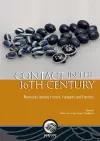
Contact in the 16th Century
2 contributors - Paperback
£42.00
Brad Loewen's work on contact societies began with the Metis bison hunters of the western Plains and led to an exhibit at the Canadian Museum of History. Aspects of Metis society, such as resource accumulation, gender, language and material culture, are conceptually related to many Contact societies that were structured around the extractive industries of the early historical period. In his subsequent work on Basque fisheries and navigation, begun while he was at the Underwater Archaeology Service of Parks Canada, Loewen saw the sailing craft called a chalupa as an influential contact technology - this small boat was the Volkswagen of the sixteenth century, whose transfer to Native societies enabled contact networks to radiate over large areas. Since joining the Anthropology department at Universite de Montreal, Loewen has studied land and underwater sites in Quebec, and has brought maritime and contact themes into a common framework. His recent work on the Basque fisheries in Labrador and Chaleur Bay explores harp seal affordances as a catalyst for contact between Native and European maritime societies. Claude Chapdelaine began his work on the Saint Lawrence Iroquoians at the early sixteenth-century Mandeville site, near his hometown of Sorel. His extensive work has been at the centre of debates on cultural variability among Iroquoian corn growers, and has also contributed to Saint Lawrence Iroquoian maritime adaptations and their puzzling disappearance at a time when European contact was increasing. His excavations at the late sixteenth-century Royarnois site at Cap-Tourmente and most recently at the Saint-Anicet cluster consolidated cultural timelines and exposed the need for a broader consultation on indicators of contact throughout the Northeast, with special reference to the Saint Lawrence corridor. Extremely active as a researcher with numerous books and articles in his name, at the Universite de Montreal, Chapdelaine also led projects on Moche sites in Peru, the important Paleoindian site of Cliche-Rancourt near Lac-Megantic in Quebec, and continues to collaborate with the many students he has trained over the years.